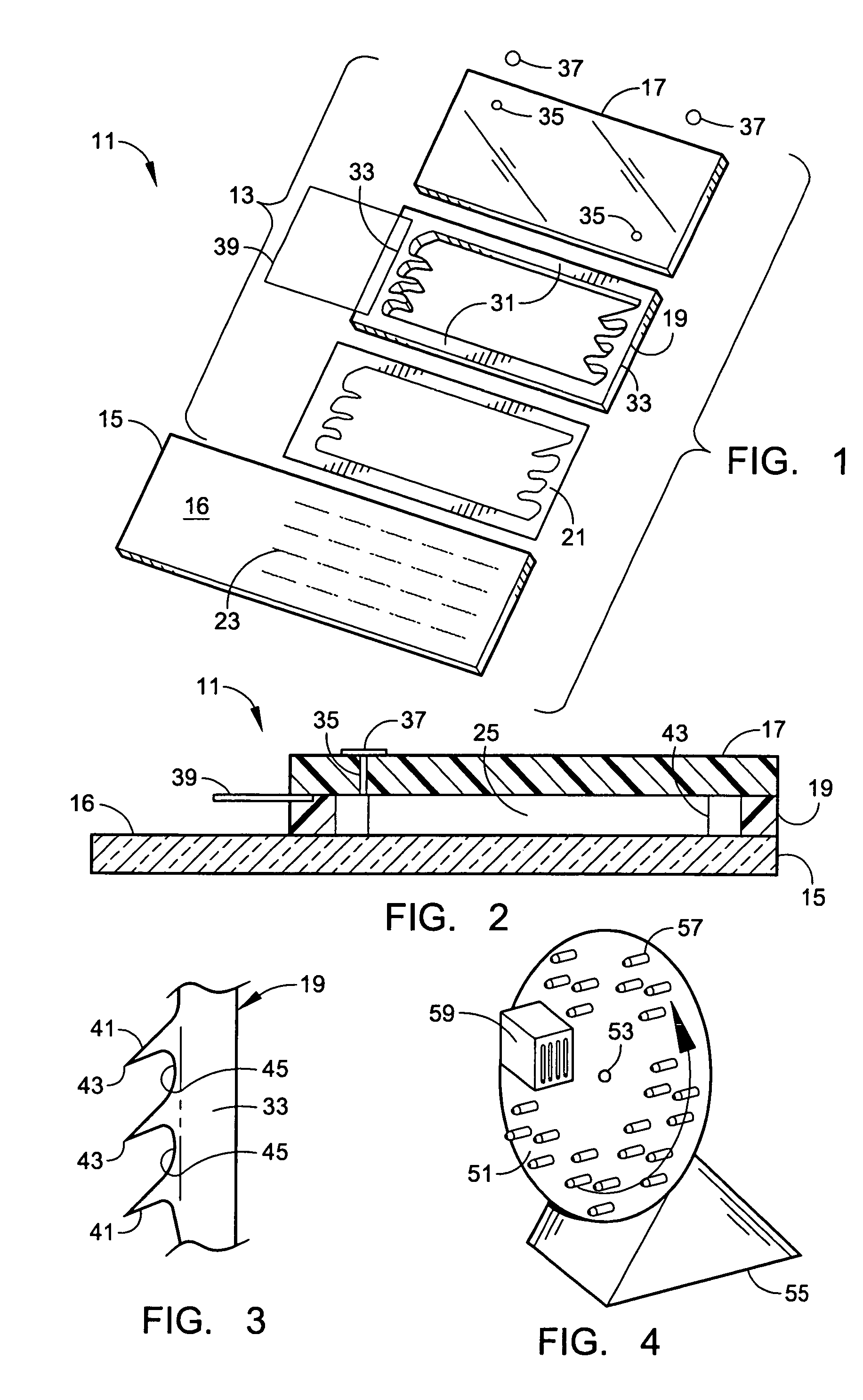Microarray hybridization device having bubble-fracturing elements
a hybridization device and microarray technology, applied in the field of microarray hybridization devices having bubble-fracturing elements, can solve the problems of large bubbles breaking up into microbubbles, and achieve the effect of increasing the volume of target solution used and the degree of mixing and uniformity of hybridization reaction
- Summary
- Abstract
- Description
- Claims
- Application Information
AI Technical Summary
Benefits of technology
Problems solved by technology
Method used
Image
Examples
Embodiment Construction
[0025]Illustrated in FIGS. 1 to 3 is an example of a microarray hybridization device 11 embodying various features of the present invention. Shown are the components of a cover and gasket subassembly 13 which bind to a glass slide 15 or the like to create a sealed hybridization chamber; the subassembly includes a flat cover 17 and a peripheral gasket 19.
[0026]The glass slide 15 provides a flat substrate upon which a microarray can be attached. Although the substrate 15 may be a standard glass laboratory slide, any other flat surface-providing object could be used that would be suitable for carrying biological samples. For example, they could be made of polymeric material instead of glass or any other suitable impervious material to which probe-carrying microdots might be applied. A standard laboratory slide 15 may be rectangular in shape having dimensions of 1×3 in. Of course other sizes and / or shapes could be used, but standardization is desirable for microassay hybridization react...
PUM
| Property | Measurement | Unit |
|---|---|---|
| height | aaaaa | aaaaa |
| volumes | aaaaa | aaaaa |
| volumes | aaaaa | aaaaa |
Abstract
Description
Claims
Application Information
 Login to View More
Login to View More - R&D
- Intellectual Property
- Life Sciences
- Materials
- Tech Scout
- Unparalleled Data Quality
- Higher Quality Content
- 60% Fewer Hallucinations
Browse by: Latest US Patents, China's latest patents, Technical Efficacy Thesaurus, Application Domain, Technology Topic, Popular Technical Reports.
© 2025 PatSnap. All rights reserved.Legal|Privacy policy|Modern Slavery Act Transparency Statement|Sitemap|About US| Contact US: help@patsnap.com


